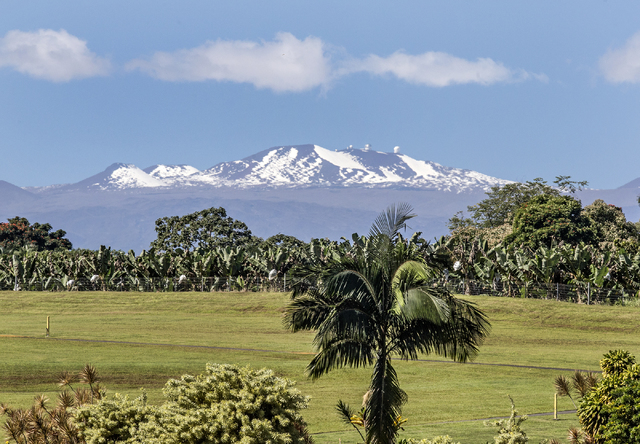HILO — Melting permafrost isn’t just an issue for the arctic. ADVERTISING HILO — Melting permafrost isn’t just an issue for the arctic. According to a new study, Mauna Kea’s last vestiges of frozen earth are in retreat. “It’s going
HILO — Melting permafrost isn’t just an issue for the arctic.
According to a new study, Mauna Kea’s last vestiges of frozen earth are in retreat.
“It’s going to be a victim of climate warming,” said University of Hawaii scientist Norbert Schorghofer, who studied the rare ice features for the past several years.
The permafrost — soil that is below freezing year-round — was first discovered in 1969 in Pu‘uwekiu and Pu‘uhaukea near the summit, according to Schorghofer’s report. Tropical mountain permafrost is found only elsewhere in Peru and on Mt. Kilimanjaro, it says.
“In some sense, it’s the warmest place to find permafrost,” Schorghofer said.
He said he documented 90 percent loss of the buried permafrost at Pu‘uwekiu using ground sensors. The ice patch is now estimated to be about 14 meters long and 6 meters thick, since the last study in 1970.
Based on that rate, it won’t take long for it to disappear, Schorghofer said.
The Pu‘uhaukea permafrost is larger at about 50 meters wide and 10 meters thick, he said. Schorghofer said it’s difficult to tell how much of that permafrost has shrunk because of limited historical data.
Mauna Kea once was home to glaciers, but it’s not known if the permafrost is a remnant of the ice age.
Schorghofer, a planetary scientist with UH-Manoa’s Institute for Astronomy, said his research permit didn’t allow sampling, which could determine the age of the ice.
In addition to studying climate change, the report says the Mauna Kea permafrost could serve as a terrestrial analogue for conditions on Mars, which has buried ice.
Schorghofer said permafrost has not been documented elsewhere on the mountain or on Mauna Loa.
Mauna Loa, on the other hand, does have ice caves that he has studied. A study released more than a year ago also found those ice sources to be melting.
Historical weather data on Mauna Kea is limited, so it’s not clear how much the summit area has warmed, Schorghofer said. But the monitoring station on Mauna Loa has recorded average temperatures increasing 1 degree Celsius (almost 2 degrees Fahrenheit) since 1970, he said.
Email Tom Callis at tcallis@hawaiitribune-herald.com.



